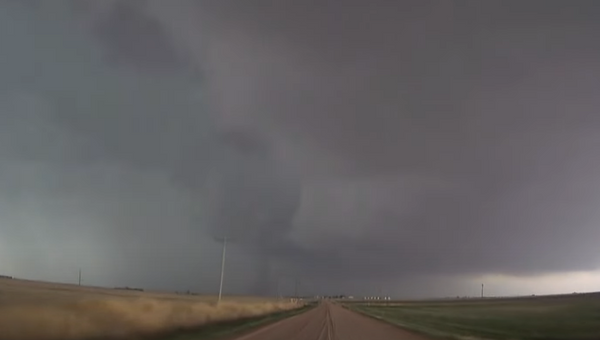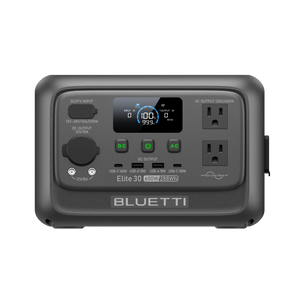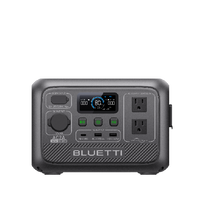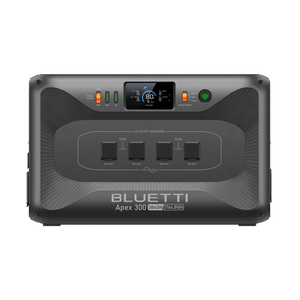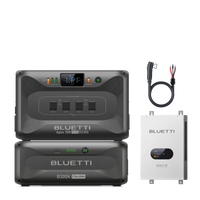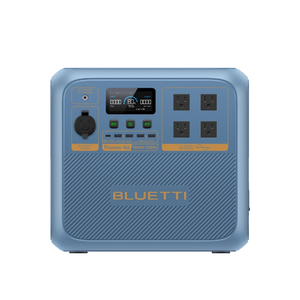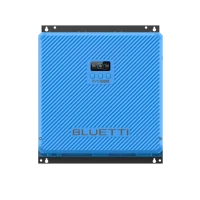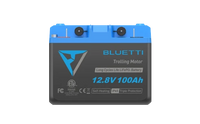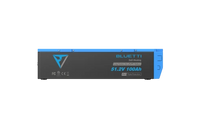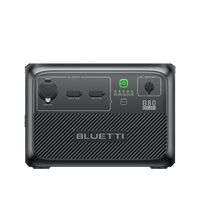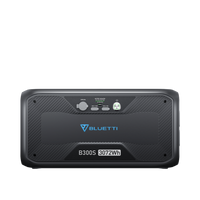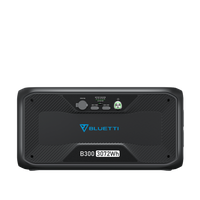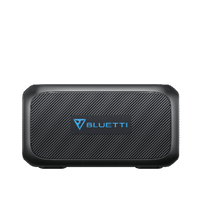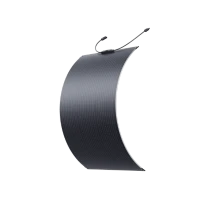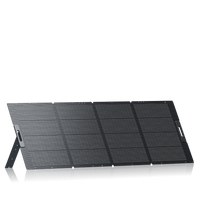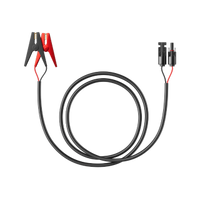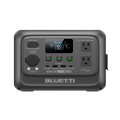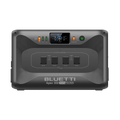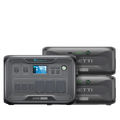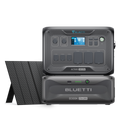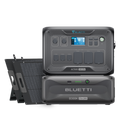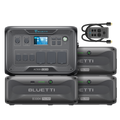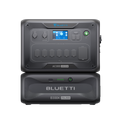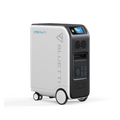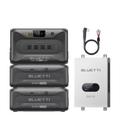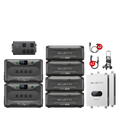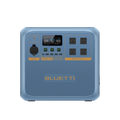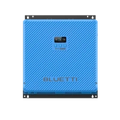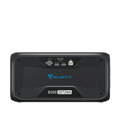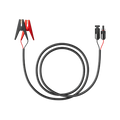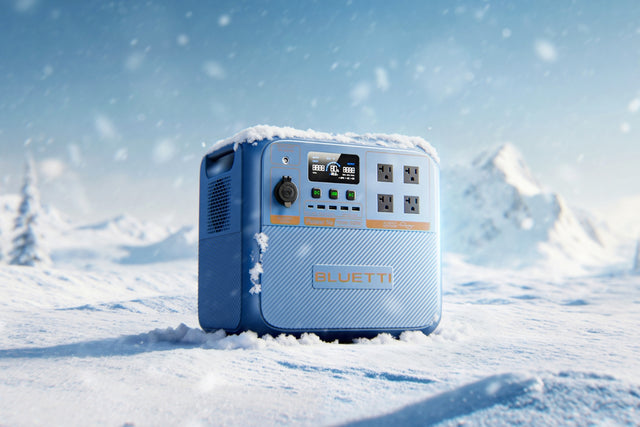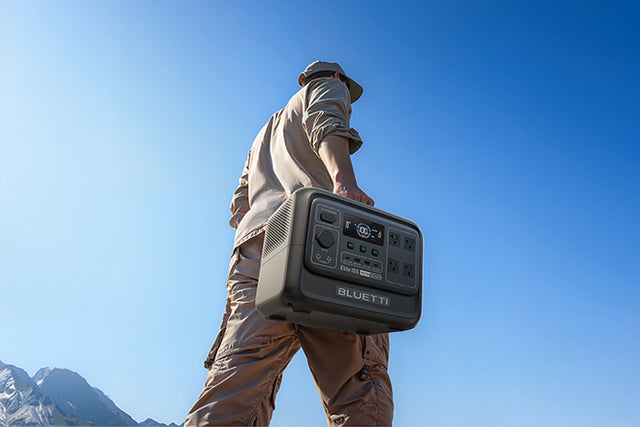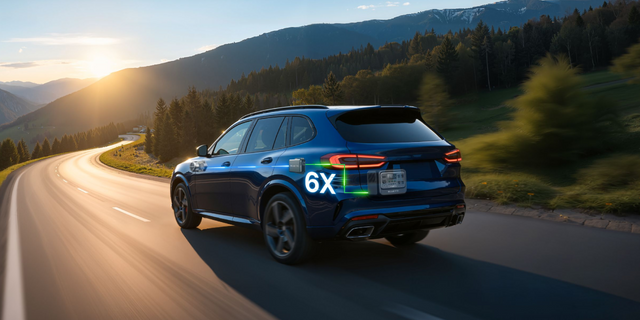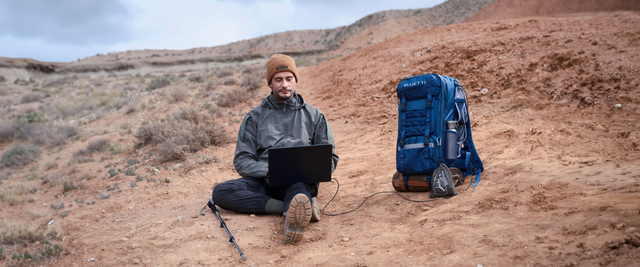Your cart is empty
Shop our productsA power bank will suffice if you need to recharge your smartphone while camping or during a blackout. However, if you plan to boil water or warm a can of stew, an inexpensive 300Wh portable power station is required.
But perhaps your schedule is tight, and your home office must continue to operate during a power failure. For that, you require greater battery capacity. While my BLUETTI EB3A can supply up to 600W of power, its capacity is limited to 268Wh. In this situation, the device’s battery would be depleted entirely within four hours.
Wattage output must also be considered. A BLUETTI EB70S boasts a capacity of 716Wh and an output of up to 800 watts. This portable power station will uncomplainingly power a television or a home office, but its wattage output is insufficient to run a hungry microwave or toaster. A larger and more powerful energy source is required for these devices.
Features and limitations regarding wireless charging, solar panel compatibility, and displayed information are also important considerations when choosing a portable power station.
Battery Capacity
Storage capacity is measured in watt-hours. This number represents the length of time a battery will power a one-watt device. The BLUETTI EB70S can illuminate a 10W light for three days. However, if it is plugged into a 100W speaker system, the power station’s 716Wh battery will last only seven hours.
Portable power stations are fitted with lead-acid, Lithium-ion (Li-Ion), lithium-polymer (Li-Po), or Lithium iron phosphate (LiFePO4) batteries.
While lead-acid batteries are the most affordable, they are bulky, slow-charging, and boast poor energy density.
Lithium-ion batteries charge significantly faster than lead-acid batteries and are extremely energy dense.
Lithium-polymer batteries are less energy dense than their Li-Ion competitors but are more widely used due to their ability to charge faster.
Lithium iron phosphate batteries are also less energy dense than Lithium-ion but are considered a safer alternative and boast a battery cycle life of four to five times as long. A LiFePo4 battery can be recycled as many as 3000 times before its maximum capacity drops below 80 percent.
Energy Density
Energy density refers to the amount of energy a battery contains compared to its weight or size. If portability is a concern, this specification should be carefully considered.
Battery Cycles
This specification describes the number of times a battery may be completely drained and recharged before it can no longer be charged to as high as 80 percent of its original capacity.
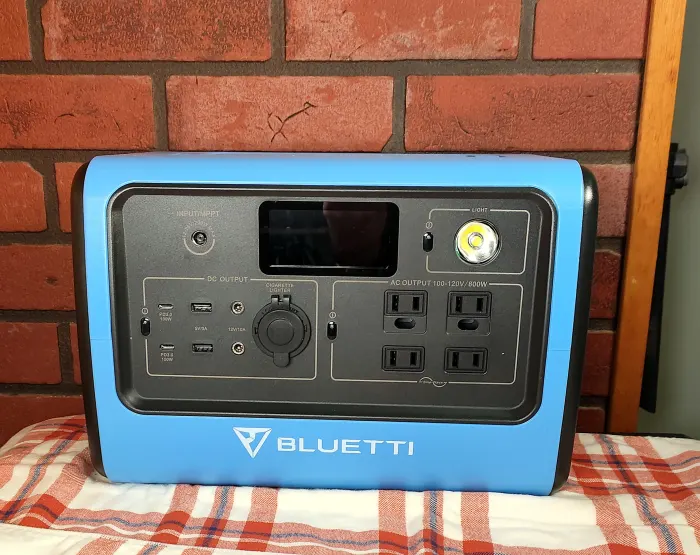
AC Output
While not directly related, the maximum AC output of a portable power station is typically higher for devices with a larger battery capacity.
The BLUETTI EB3A is equipped with a power inverter allowing it to handle devices requiring as much as 600 watts. It can even cope with a 1200W surge.
Most of its 300Wh competitors are rated for 300 - 400 watts. And that is fine; my 300W Buydeem mini kettle can be plugged into any one of these devices and reliably boil water or heat a can of stew.
However, as the maximum output of a portable power station increases, it becomes a more useful source of energy. Your computer will not require the total 800 watts of power provided by the BLUETTI EB70S, but when you add monitors, external hard drives, and other office equipment, you can quickly reach that limit.
Some of the larger portable power stations are fitted with inverters capable of supplying up to 2000 watts. This allows the use of power-hungry tools at the job site or the equally thirsty appliances that dominate every kitchen.
Pure sine wave inverters provide clean sine waves that produce AC, while modified sine wave inverters utilize pulse width modulation to mimic this signal. Both versions function well, but those connecting their power station to extremely sensitive equipment prefer pure sine wave inverters.
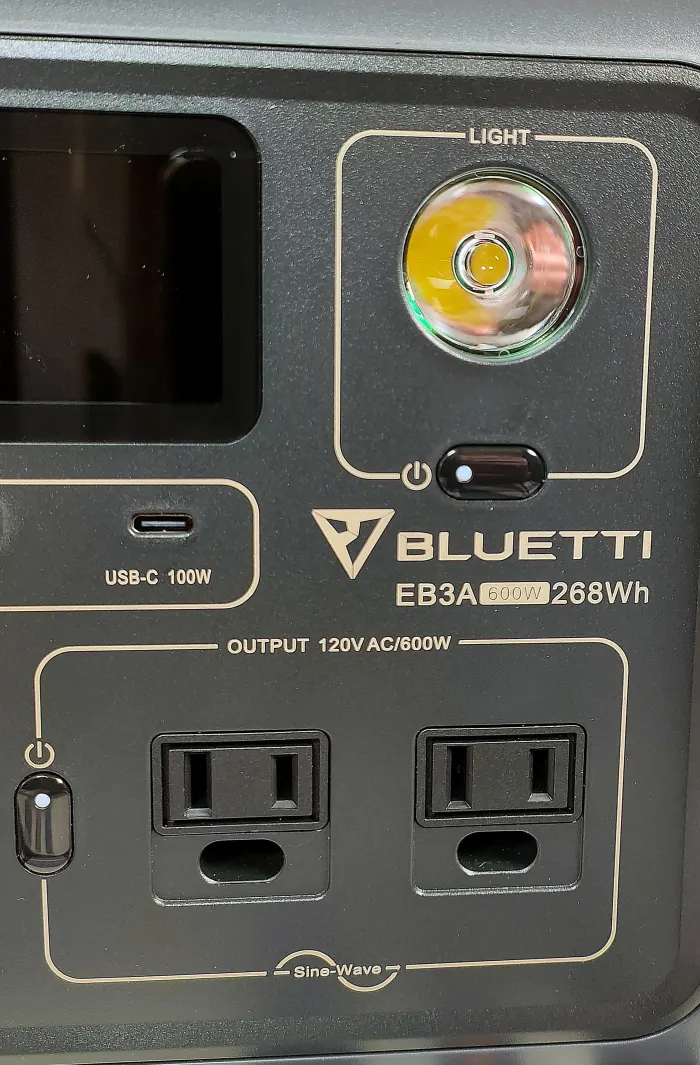
Charging
While a few portable power stations can be directly plugged into an AC outlet and charged quickly, most are paired with an AC adapter. The charging speed of these devices varies according to the capability of their adapter to convert AC power to DC. Many smaller portable power stations are matched with adapters that provide as little as 60W of power. Larger units, such as the BLUETTI EB70S, employ adapters capable of supplying up to 200W.
These devices may also be charged using the cigarette-style port of an automobile and compatible solar panels. Car charging tends to be slow because the automobile’s output is limited to 12 volts. The energy provided by a solar panel is dependent upon the sunlight available.

Wireless Charging
While wireless charging is wasteful of power, it can be a helpful option, cutting down on the necessity to carry charging cables on a camping trip.
The Display
Several of the less expensive brands of portable power stations are equipped with four LEDs designed to indicate the device’s charging level. More sophisticated units incorporate panels that display both the input and output power. The BLUETTI EB3A can estimate the time before it is fully charged or completely depleted.
Battery level is the most important of these indications. However, if you intend to charge your portable power station with a solar panel, a display that includes power in is vital. This information allows you to point the solar panel toward the strongest source of sunlight.
|
SPECIFICATION |
BLUETTI EB3A |
BLUETTI EB70S |
|
Battery capacity |
268.8Wh (12Ah) |
716Wh (32Ah) |
|
Battery type |
LiFePO4 (Lithium Iron Phosphate) |
LiFePO4 (Lithium Iron Phosphate) |
|
Power output |
600W (1200W surge) |
800W (1400W surge) |
|
Inverter type |
Pure sine wave |
Pure sine wave |
|
Fast charging |
430W (AC cable plus solar panel) |
NA |
|
AC charging (normal) |
268W Max (AC cable) |
200W Max |
|
AC charging (turbo) |
350W Max (AC cable) |
NA |
|
Max solar input |
200W Max |
200W Max |
|
Car input |
12/24V (Cigarette Lighter Port) |
12/24V (Cigarette Lighter Port) |
|
Recharge time |
1.5 – 2 hours (Normal AC charging) |
≈4-4.5 Hours |
|
AC outlets |
2 x 120V/5A Outlets |
4 x 120V/20A Outlets |
|
Wireless charging pad |
15W Max |
15W Max |
|
USB-A outputs |
2 x 5V/3A |
2 x 5V/3A |
|
USB-C output |
100W Max |
2 x 100W Max |
|
DC output (car style) |
12V/10A |
12V/10A |
|
DC output (DC 5521) |
2 x 12V/10A |
2 x 12V/10A |
|
Weight |
10.14 pounds |
21.4 pounds |
|
Dimensions |
10.04 x 7.09 x 7.2 inches |
12.6 x 8.5 x 8.7 inches |
Lighting System
Every portable power station is fitted with at least one light. A built-in flashlight might be marginally helpful in a smaller lightweight unit, but those that can brighten the interior of a tent or provide the illumination necessary to read are more practical.
Pass-Through Charging
This allows the power station to be recharged while charging other connected devices. During a power failure, for example, a station coupled to a solar panel could continue to charge the laptop connected to it. Both the EB3A and the EB70S are pass-through charging capable.
The EB3A may also be recharged via an AC outlet and a solar panel at the same time. The power input from two sources will shorten the time required to charge the device entirely.
Safety Features
Ensure the power station features a battery management system and is protected against overvoltage and short circuits.
The Final Choice
The power station you select should meet the battery capacity and wattage output requirements of the tasks it must complete.
A small unit like the BLUETTI EB3A will keep your devices charged during a power failure or a camping trip.
If, however, you wish to run a computer system, fridge, or television during a blackout that lasts several hours, a higher-capacity unit like the BLUETTI EB70S would be the better option.
A higher-wattage device, such as the BLUETTI AC200P, is required to power equipment at a remote job site or to operate kitchen-based equipment during a power failure.
Shop products from this article
Be the First to Know
You May Also Like

Deadly Flooding Devastates U.S. South and Midwest — What You Need to Know

BLUETTI Teams Up with Leave No Trace to Power Sustainable Outdoor Adventures
